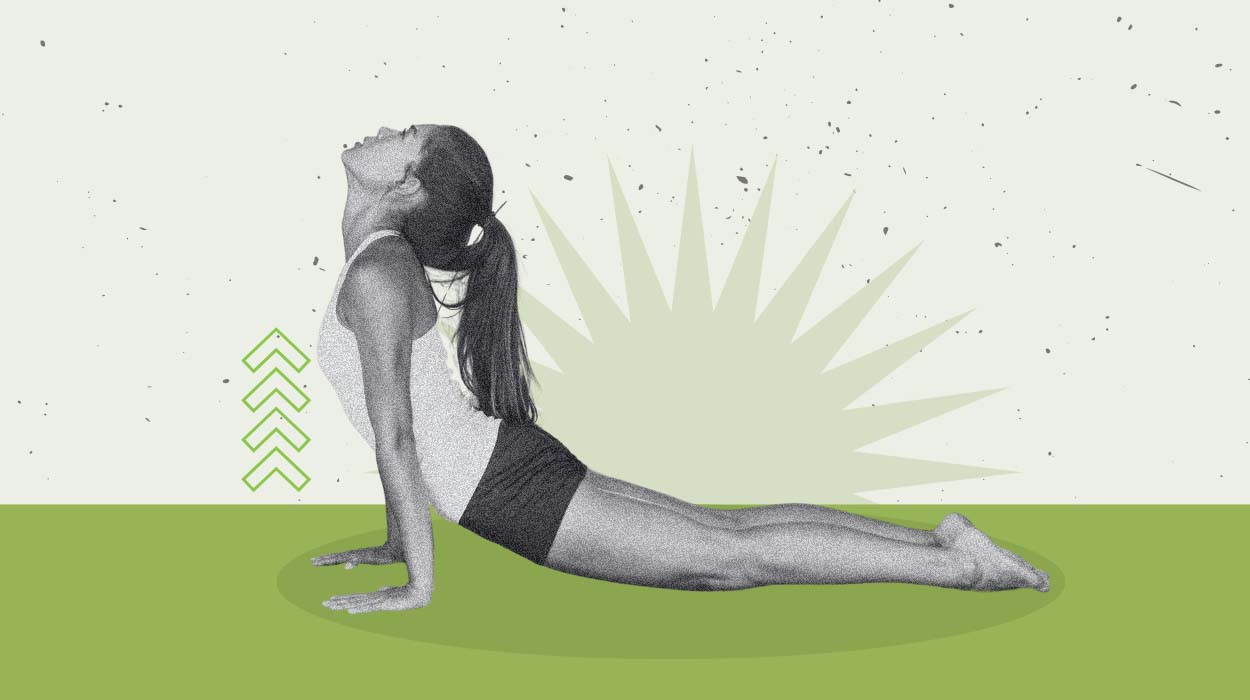
Stretching is a precious exercise technique that can be used to relieve lower back issues. There are a variety of stretches. The stretches that you choose will be based on specific needs, capabilities, and personal preferences. Personally, I am at a very advanced level, so I regularly incorporate deep lower back stretches. This ensures that my lower back does not get stiff and painful.
Best Lower Back Stretches To Reduce Pain And Build Strength
Lower Back Stretches And How To Do Them
Discover the key to relieving lower back tension and improving flexibility with our comprehensive guide on lower back stretches and how to perform them effectively
Knee-To-Chest Stretch
This simple exercise will loosen tight hip flexors, lower back, and even hamstrings. There may also be some smaller muscle groups stretched in the process.
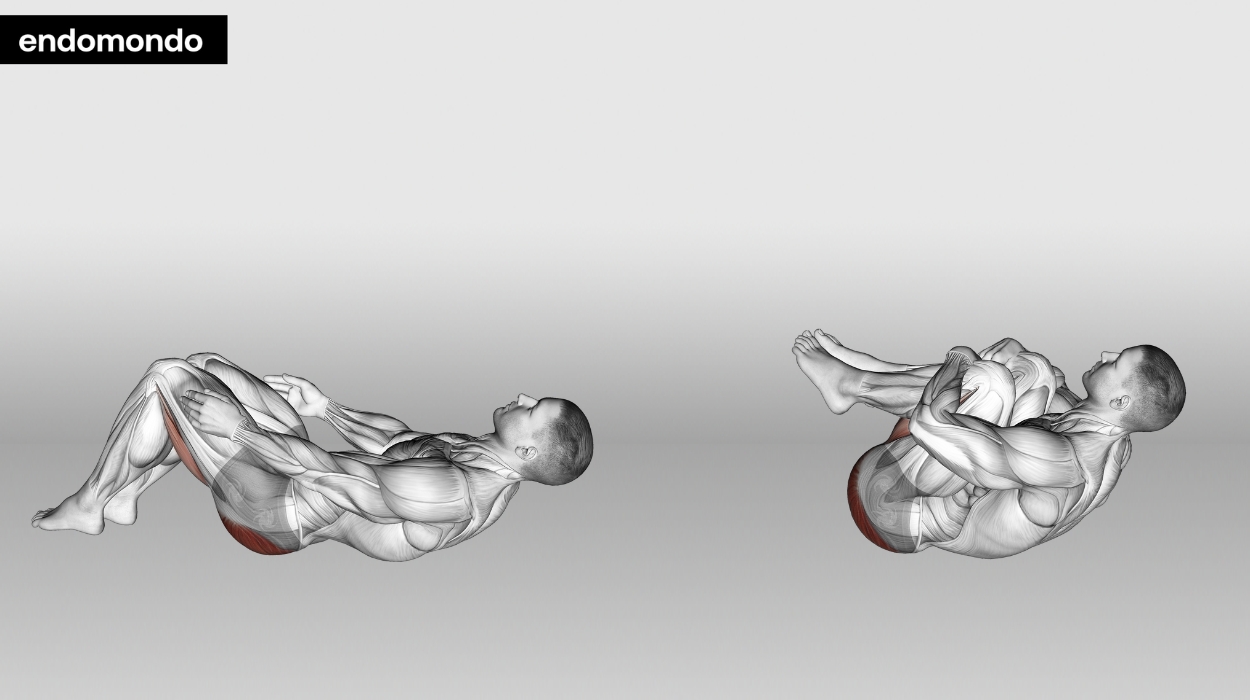
How to do:
- To perform this stretch, you must lay on the ground supinated as a starting position (on the back). Preferably, you should use a clean flat surface for safety and hygiene purposes
- With the knees bent, gently pull the upper legs towards the chest
- Hold that position for ~30-40 seconds at a time
Tips:
- Perform this stretch gently to avoid any sudden jerking or pulling on your lower back.
- Focus on breathing deeply and relaxing during the stretch to maximize its effectiveness.
- Gradually increase the intensity and duration of the stretch as your flexibility improves over time.
Optimal Sets And Reps: 2 sets of 30-40 seconds hold per leg.
Single Knee-To-Chest Stretch
This stretch is very similar to the previous one as it creates tension in the same muscles. The difference is that you are emphasizing one leg at a time, where you can apply a deeper stretch by adding pressure via the hands. This stretch can also be done with the legs extended as opposed to bent, which would stretch some additional muscles like the calves.
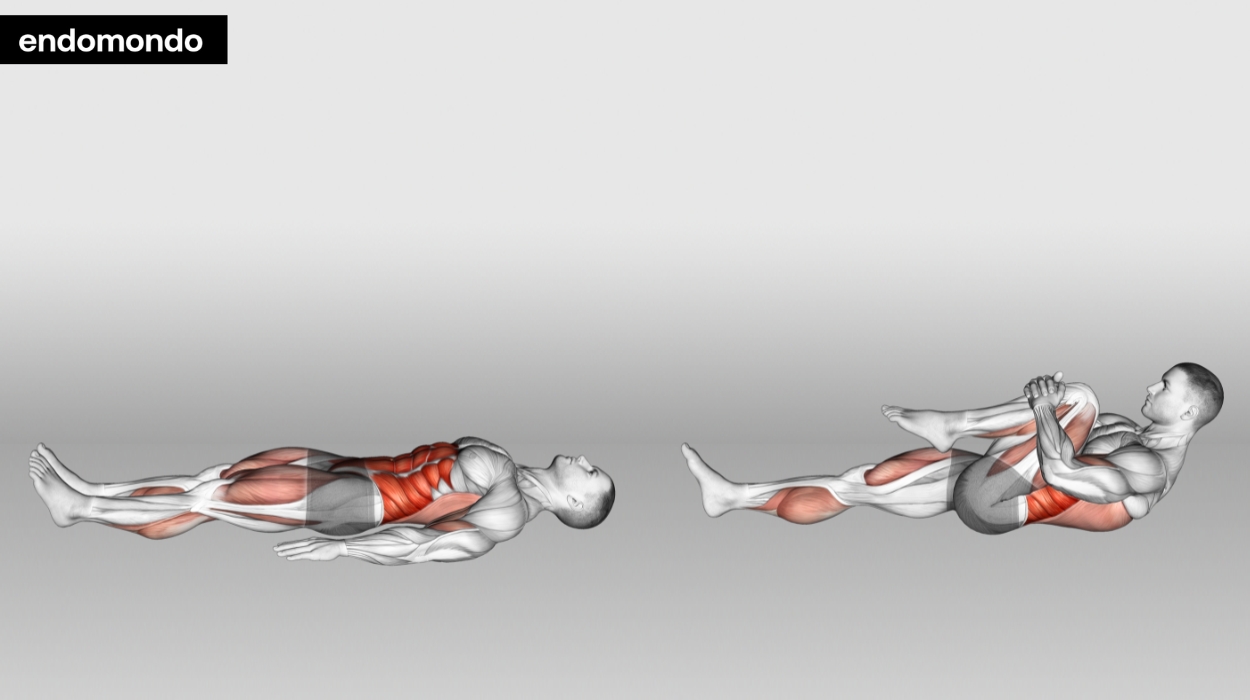
How to do:
- You can start this stretch by lying supinated
- With the left knee bent, pull the left thigh as close to the left pectoral as possible
- Hold that position for ~30-40 seconds at a time
- Be sure to alternate between legs
Tips:
- Start with a brief warm-up to prepare your muscles
- Maintain a flat back and engage your core for proper form.
- Focus on deep breathing to enhance relaxation during the stretch.
Optimal Sets And Reps: 2 sets of 30-40 seconds hold per leg.
Cobra Stretch
The cobra stretch differs from the previous two stretching exercises from the positioning. This exercise would stretch the lower back and abdominal muscles for the most part. This stretch is great for relaxing tight hips.
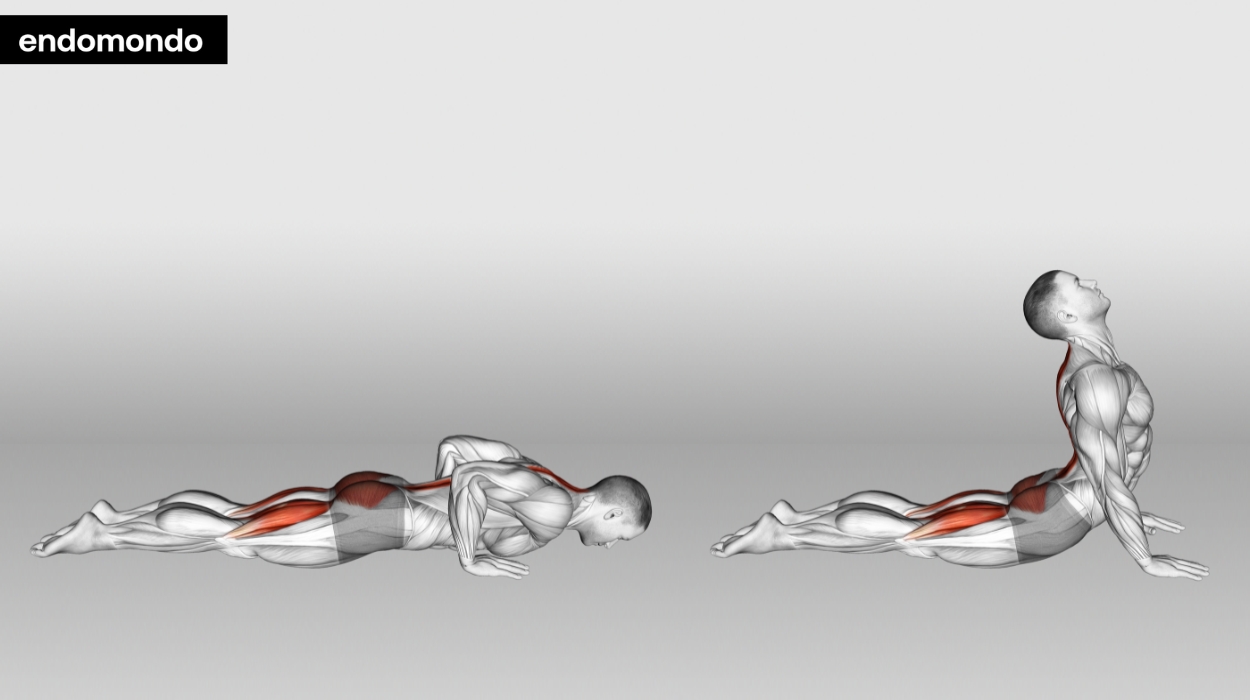
How to do:
- Lay prone (on the front) with the legs straight and arms on your side
- Place the hands flat on the ground similar to a push-up
- Retract the shoulder blades and slowly lift the trunk off the ground with the lower body static to create a pelvic tilt
- Hold this position for ~30 seconds at a time before you release tension
Tips:
- Keep your hips on the ground to avoid straining your lower back.
- Engage your core muscles for stability and support.
- Gradually increase the stretch height as your flexibility improves.
Optimal Sets And Reps: 2 sets of 30-40 seconds hold.
Toe Touch
The toe touch is a very popular stretch amongst people who exercise or those who seek optimal lower back health. In fact, along with many other interventions, it helped me with chronic low back pain. This exercise will stretch most of the muscles on the posterior chain, from the upper back, arms, hamstring, calves, and last but not least the lower back.
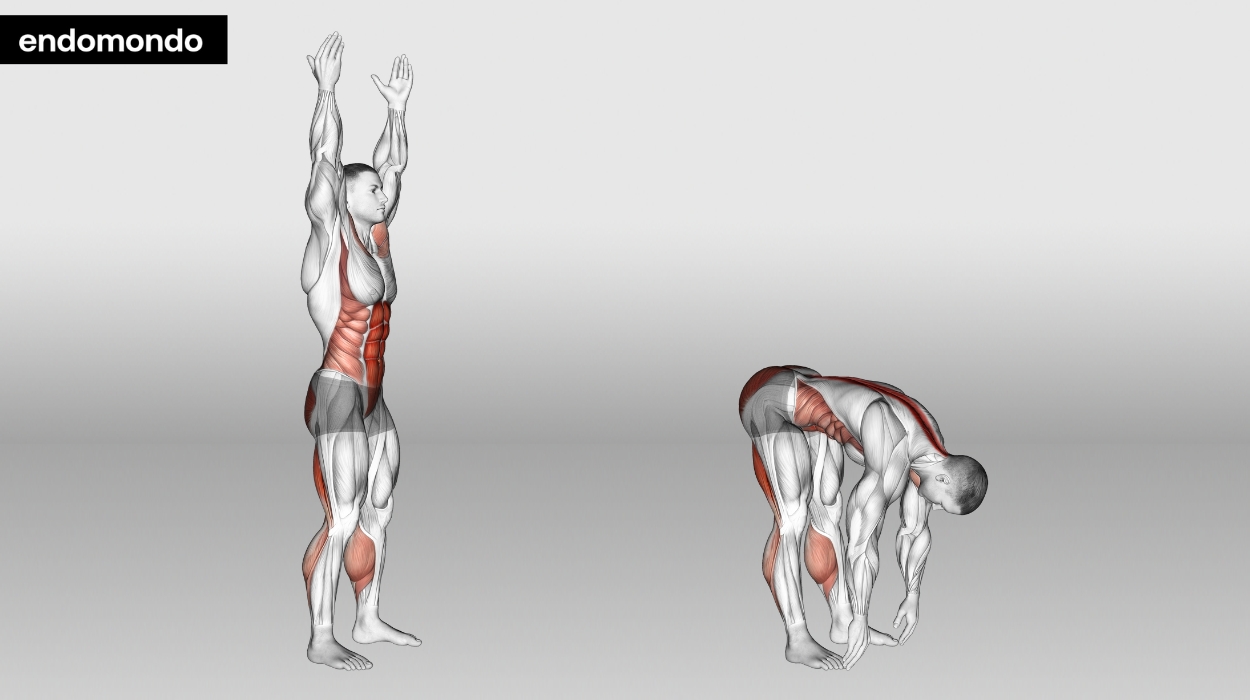
How to do:
- Start by standing upright with the feet flat on the floor and hip-width apart
- Keeping the legs straight, tilt the hips backward and reach as far as possible towards the toes
- Touch the left foot with the left hand and the right foot with the right hand if possible.
- Hold the stretch for as long as ~40 seconds
Tips:
- Keep your knees slightly bent to avoid overstraining your lower back and hamstrings.
- Engage your core muscles for stability throughout the movement.
- Exhale as you reach down to enhance flexibility and avoid holding your breath.
Optimal Sets And Reps: 2 sets of 30-40 seconds hold.
Cross-Leg Forward Fold
This could be considered an advanced variant of the toe touch as it induces a deeper stretch on almost identical muscles.
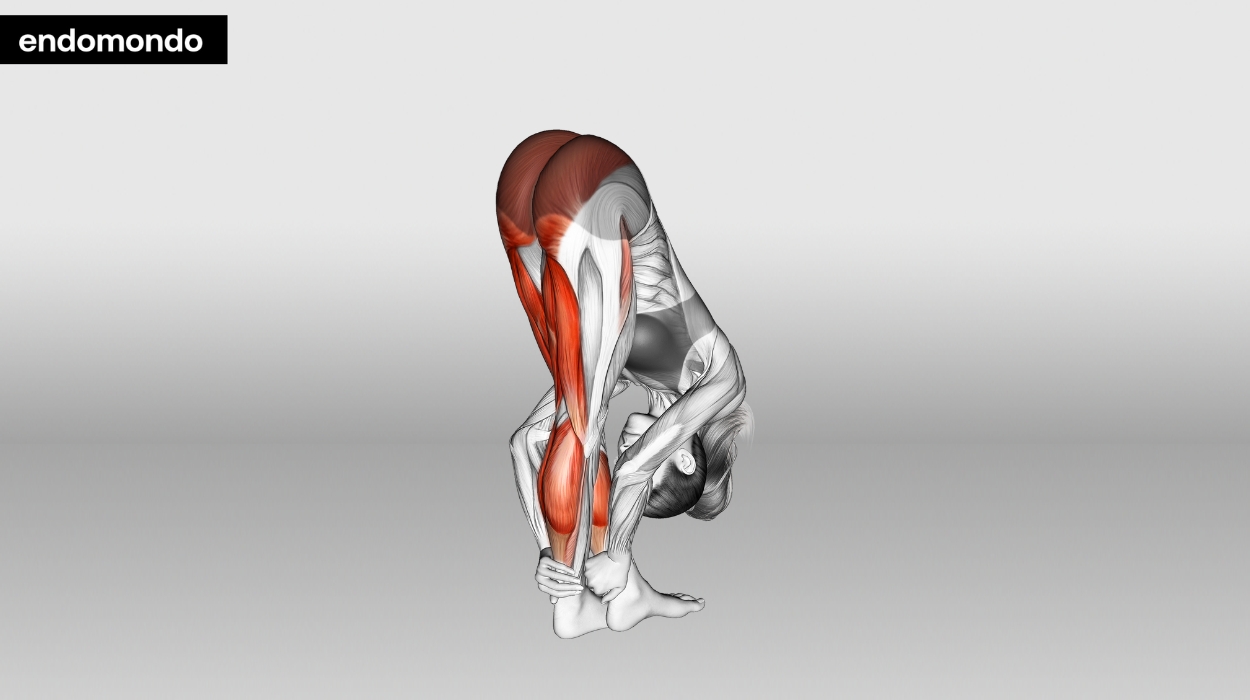
How to do:
- Start by standing upright with the feet flat on the floor and your legs crossed
- Keeping the legs straight, tilt the hips backward and lean forward as far as possible. Some people are able to condition themselves to touch the leg with the head
- Grasp the back of the heels and hold the stretch for as long as ~20 seconds
Tips:
- Keep your knees slightly bent to avoid overstretching your hamstrings.
- Hinge at your hips while maintaining a straight back for proper form.
- Relax your neck and breathe deeply to enhance the stretch and reduce tension.
Optimal Sets And Reps: 2 sets of 15-20 seconds hold
Hip Crossover Stretch
This can be classified as a lower spine and piriformis stretch. The piriformis is a small muscle located at the front of the hip bones.
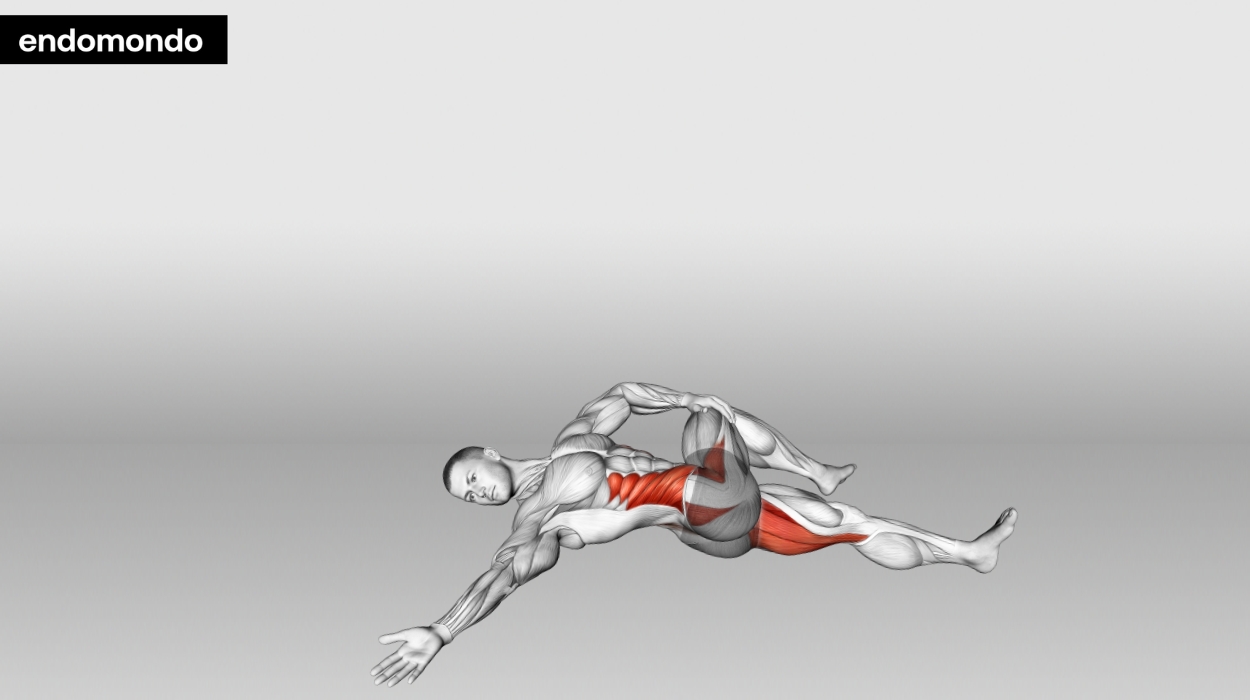
How to do:
- Lying supine starts by bending the knees keeping the feet flat and pointing forwards
- Fold the Left leg over the right leg (left heel on right knee) then stretch by lifting up the right leg
- Hold this stretch for 20-30 seconds at a time
- Ensure that you alternate between legs
Tips:
- Keep your shoulders flat on the ground to maximize the stretch.
- Engage your core to stabilize your spine throughout the movement.
- Move slowly and deliberately, focusing on the stretch in your hips and lower back.
Optimal Sets And Reps: 2 sets of 30-40 seconds hold per leg.
Kneeling Lunge Stretch
The kneeling lunge stretch is another lower back stretch. It stretches other muscles too, including the hip extensors, quadriceps, and iliopsoas.
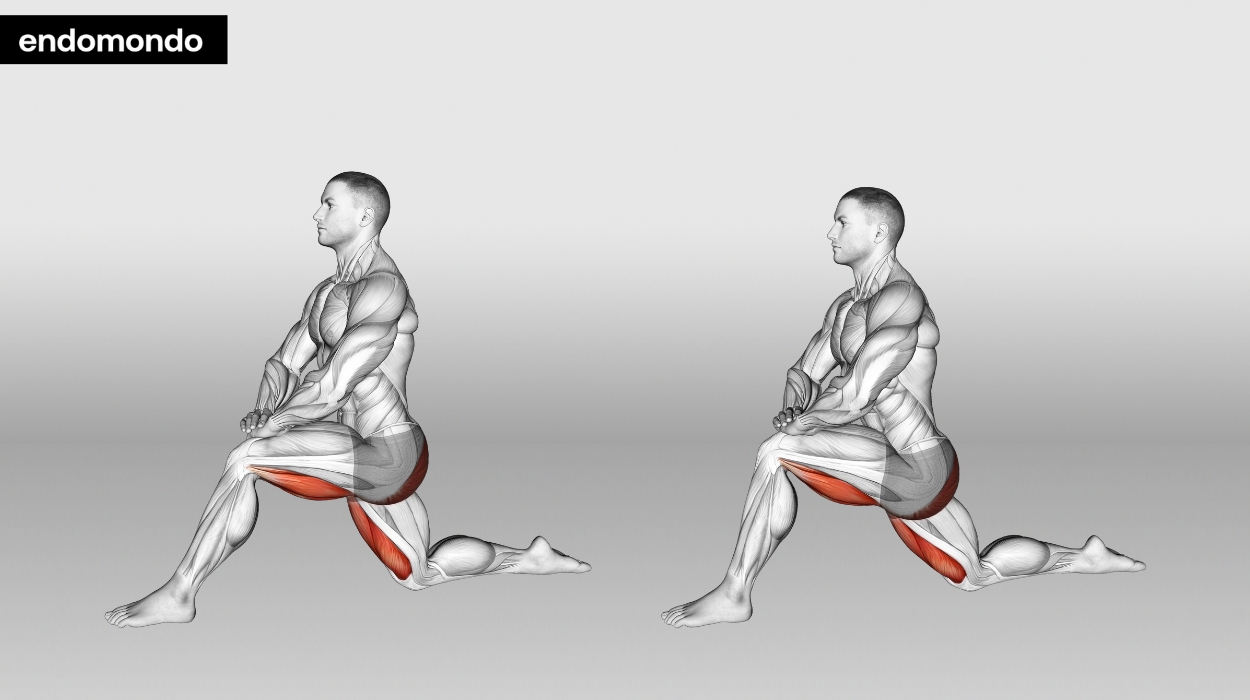
How to do:
- Place the right knee on the floor, while simultaneously flexing the left leg, with the foot flat on the floor
- Stretch hip and lower back from this position
- Hold this position for 30 seconds, and alternate between legs
Tips:
- Maintain proper alignment with your front knee directly above your ankle.
- Engage your core to protect your lower back and enhance the stretch.
- Gently push your hips forward to intensify the stretch in your hip flexors and quadriceps.
Optimal Sets And Reps: 2 sets of 30-40 seconds hold per leg.
Spine Twist
This stretch targets the lower back and spine.
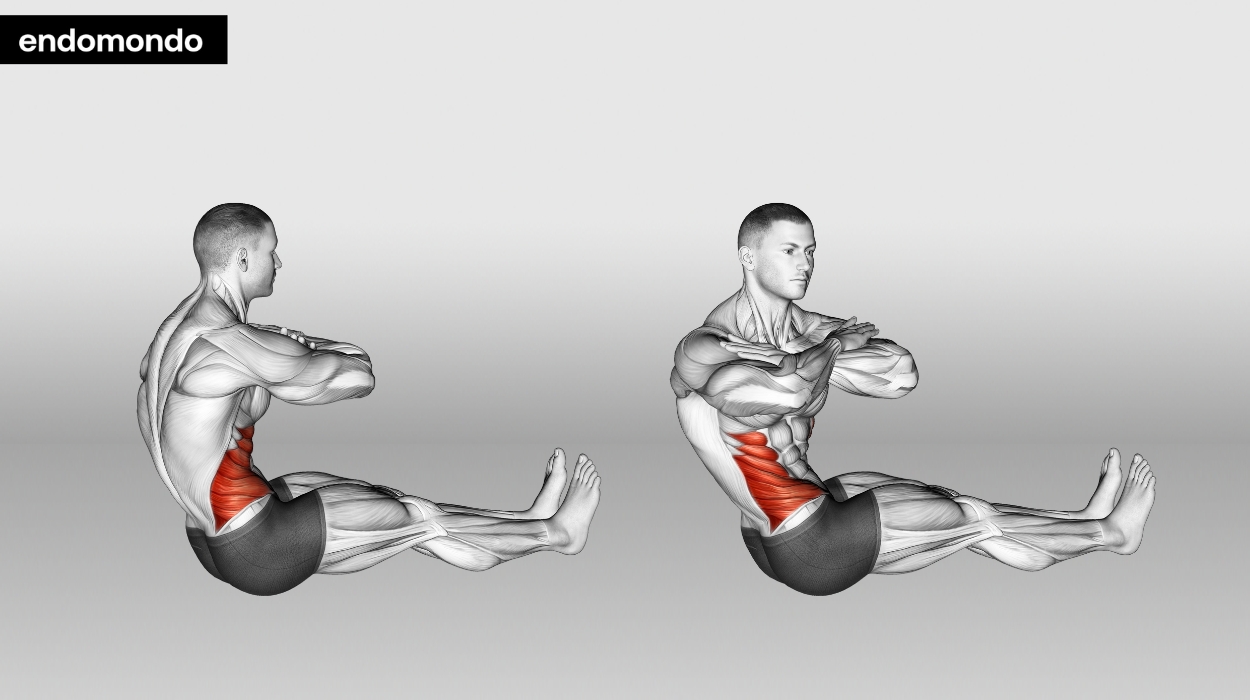
How to do:
- Start by sitting on the floor, with your legs straight out in front of you and your arms crossed across your chest
- From this seated position, gently twist the trunk to the right
- Hold this position for five seconds at a time and alternate sides
Tips:
- Sit up tall with good posture to maximize the twist’s effectiveness.
- Inhale to lengthen your spine, and exhale to deepen the twist gently.
- Engage your core muscles for stability and support throughout the movement.
Optimal Sets And Reps: 10 sets of 5 seconds hold per side.
Child’s Pose
The child’s pose stretches all of the major muscles of the back, including the trapezius, shoulders, lats, and lower back.
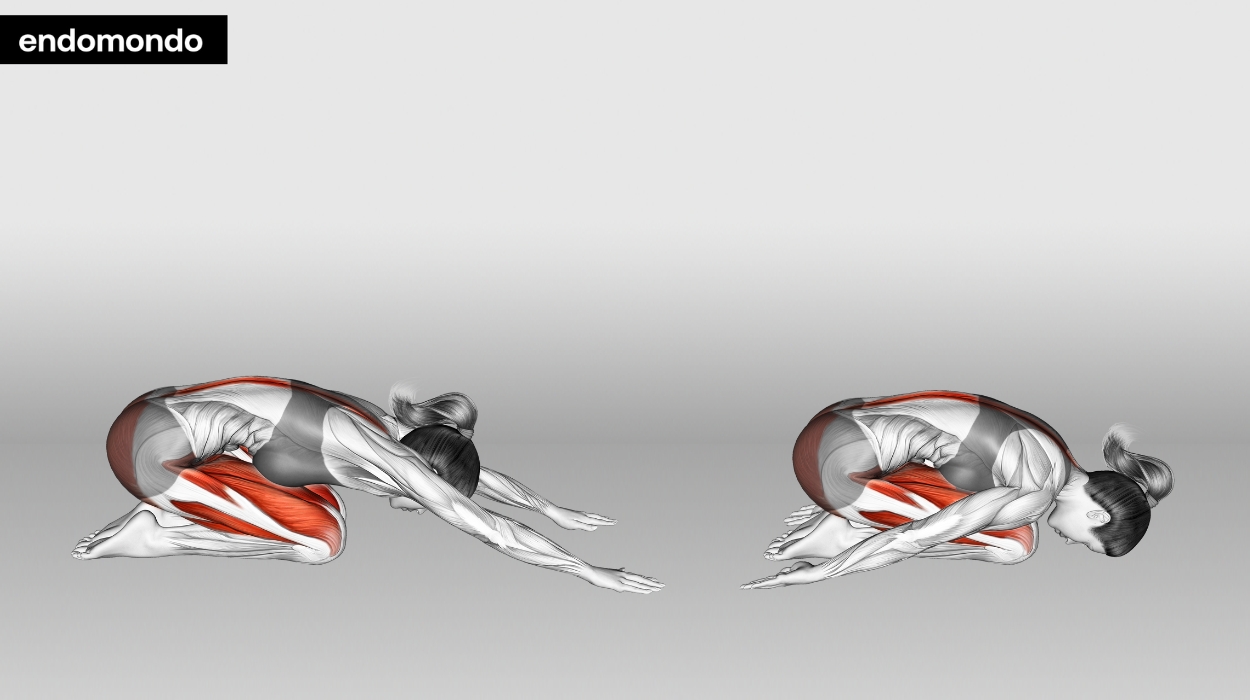
How to do:
- Get on your knees and spread your legs out
- Lean forward with the head down, arms stretched and palms flat
- Remain in this spot for up to one minute, as tolerated
Tips:
- Start in a kneeling position and gradually lower your hips toward your heels while reaching your arms forward.
- Keep your breathing slow and deep to enhance relaxation.
- Focus on releasing tension in your lower back, hips, and shoulders as you hold the stretch.
Optimal Sets And Reps: 2 sets of 15-20 seconds.
Benefits Of Doing Lower Back Stretches
There are three main benefits[1] that can be reaped from lower back stretches. We have briefly discussed these benefits below.
Relieve Pain

Stretching along with some myofascial release can help with pain relief in the back. Muscles of the back i.e. erector spinae often become tight and painful from being overactive and accumulating ground substance. Not only does pain affect daily activities, but it can also hinder quality and quantity. Lower back pain can make it more difficult to fall asleep and increase bouts of waking.
Correct Stiffness And Posture
Alongside pain, many of you may also feel a sensation of back stiffness. It is not just muscles that become stiff, the ligaments and tendons surrounding the lower back can also be affected. Muscle stretching can play a role in correcting any lower back stiffness. Stretching may also correct posture and realign the spine if needed.
Improved Spinal Mobility
When you are experiencing a significant amount of pain and/or stiffness, it can become difficult to create everyday movements like bending over (flexion) Twisting (rotation) Pulling backward (extension), and moving side to side (flexion). Lower back stretches can revive and even improve these movements.
Other Tips For Doing Lower Back Stretches
Warm Up Before Stretching
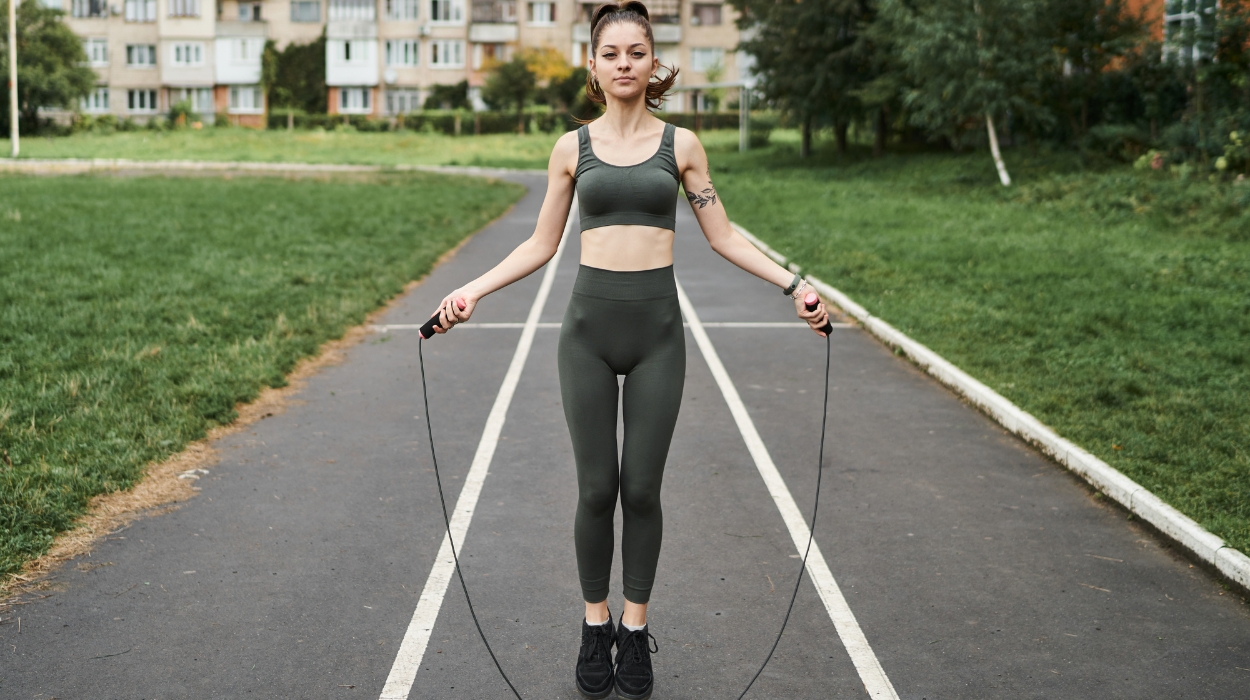
Warming up lubricates joints with synovial fluid and increases core body temperature. This can make muscles, tendons, and ligaments more pliable and resilient to snapping. This is crucial for stretching, as it puts the tissues through a lot of tension, which poses a risk of injury like strains and tears.
The kind of warm-up that I like to engage in before stretching can be brisk walking, light jobs, or jumping rope for five to six minutes. The time it takes to warm up can vary from person to person.
Maintain Good Form
I can not stress the importance of maintaining proper stretching form. If you perform a stretch incorrectly, there is a risk of musculoskeletal injuries like muscle strain, tendon strain, joint sprain, and even spinal damage. Generally, you would stretch to your capability and if you feel any sharp pains, it is advised to terminate the stretch immediately.
Jokes aside, I have seen people tear muscles for hyper-stretching. Depending on the severity of the injury you could be immobile for weeks to months or even require surgery.
Get One To One Coaching
A coach or personal trainer will be able to supervise your form and stretching technique. Not only that, but they will provide more personalized stretches based on your needs, capabilities, and preferences.
The only downside is that most coaches would probably take a fee for their time, but it may be worth it in the long run.
Conclusion
Lower back-based stretches may reduce pain, and stiffness and improve mobility. We have included 10 that you could try, some are more difficult than others so do take that into account.
To reap the benefits and minimize the risk of injury from stretching, ensure that you warm up and maintain good form. Another option is to employ a coach to work with you on a one-to-one basis. A coach can provide more personalized support for your needs, as well as guide safe and effective stretches.
Frequently Asked Questions
ABSOLUTELY! Foam rolling is a technique for releasing tight soft tissue, combining it with lower back stretching is thought to work great.
So my general recommendation is 30-40 second stretches for three to four sets.
YES! It could be a case of a spinal or muscle injury, therefore it is always recommended to seek professional advice from a health care professional i.e., a physical therapist.
Resources
- Kim, B.-R. and Yim, J. (2020). Core Stability and Hip Exercises Improve Physical Function and Activity in Patients with Non-Specific Low Back Pain: A Randomized Controlled Trial. Tohoku Journal of Experimental Medicine, [online] 251(3), pp.193–206. doi:https://doi.org/10.1620/tjem.251.193.




